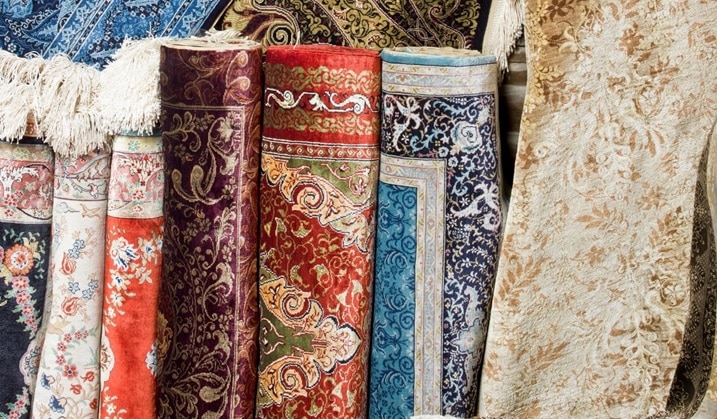Silk rugs are an investment. You want to make sure you’re buying the real thing, not a cheap knockoff. Here are some tips for identifying silk rugs that will help ensure you get what you pay for.
1. Look for knots
Search for irregularities in the weave, which may indicate the use of a different material or poorer quality. The knot count can also help you determine the quality of your silk rug. Knots should be about 1/8″ apart, with between 50 and 200 knots per square inch; higher numbers are better. Quality silk rugs usually have more knots per square inch.
2. Look for hairs in the pile
Remove all dust and dirt from the surface of the rugby, either vacuuming it or brushing it with a soft brush. If there are any loose hairs in the pile of the rug, they will be seen easily. Real silk rugs will have more hairs in the pile than polyester rugs.
3. Look for irregularities and signs of wear and tear
Examine the entire rug carefully, regardless of whether it is silk or synthetic rug. Check for irregularities in color, design, and weave, including slubs, slight differences in knots per square inch, stitches that are uneven or run over on themselves, and irregularities in the pile.
4. Look at how it is made
Real silk rugs are usually constructed of a single piece of fabric, while synthetic rugs may include many pieces stitched together. If it has a seam, look for stitches that are even and regular; polyester stitching will be less regular and “floppy” compared to silk stitching. If the rug is a double-knotted type, look for a symmetrical pattern of knots. You can also check how it is sewn together by examining the edges of the rug, if applicable.
5. How It Feels
A real silk rug will feel smooth and cool to the touch, while a synthetic rug will feel “scratchy” or hot. Make sure to examine the entire rugby running your hands over it for at least five minutes, noting any differences in texture.
The bottom line is that you should trust your own judgment about the quality of the fabric since only then are you equipped with your own knowledge about the different types of rugs. Of course, none of this information is 100% conclusive, but it can give you a very good idea about whether your rug is made from silk or polyester.
6. Look at the price and the label
Another way to determine what type of rug you have is to see if there’s a label on it. Some silk rugs will have a tag attached, while cheaper synthetic rugs usually don’t. These tags can give you an idea about where your rug was made and who designed it.
A real silk rug is going to be quite a bit more expensive than a synthetic one, so you have your answer right there! If you are unsure about whether the price is too good to be true, check out our other clues and tips.
We hope that this article has been helpful for you. Silk rugs are not easy to identify. You should always ask the seller for more information about their rug if you have questions or concerns, and make sure to learn how silk is made before making a purchase decision.

